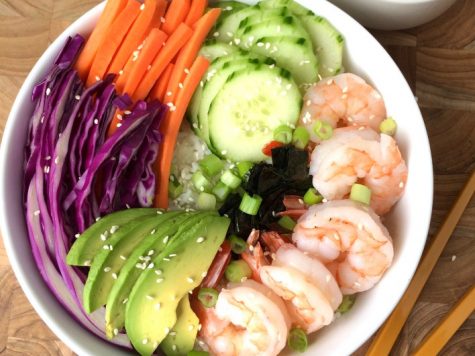In an age in which Social Media is invaded by hastily taken photographs of food, Simona Rizzo‘s work goes against the current trend. The young Italian photographer offers a refined and accurate interpretation of food photography, whose evident aspiration is to recall the great masters of art history, such as Caravaggio.

Simona Rizzo approaches with passion the topic of food with her still life photography. We got the chance to meet her through her on-going project titled Nature morte, which she has been running since 2012. We have interviewed Simona Rizzo about her project, its execution, and her interest in food photography. Here are some amazing pictures of Nature morte, click on the images to enlarge.
What first sparked your interest in still life photography and food?
My interest in food photography stems from a need or simple desire to try to create images that are able to effectively express the natural goodness of the ingredients I was used to cooking and eating every day. That of still life photography was a somewhat different matter: my interest in this genre (not only in photography) is a longstanding one. I believe it dates back to when I observed the Caravaggio’s Canestra di frutta (Caravaggio’s basket of fruit) for the first time when I was ten years old. I was unable to understand what it was about a simple basket of fruit that fired me with such enthusiasm to want to draw it.
How did the idea of this project come about and how has it been developed?
At first, I wanted to experiment a new photography technique so I started to shoot simple objects using the light painting technique. This technique enables you to decide how, what and how much light to give to the scene, by creating “pictorial” effects that are often interesting. I was enthusiastic about it right from the start. I thought it was important and natural to exploit the expressive potential of this technique and to use it to enhance the compositional aspects in which light (and lack of light) are a fundamental element. Hence the project of my still lifes in pictorial light.
What are your main sources of inspiration in photography and everyday life?
The great still life painters of the XVI-XVII centuries, Caravaggio in particular, for the composition and organisation of space according to the rules of golden section proportions. And Francisco de Zurbarán of the Spanish school of the “Siglo de oro” (Golden Age) for his use of light and ability to render the physical characteristics of materials perfectly, such as their colours and textures.
How did you define and develop the process of selecting the various components making up your images?
The intention to recover such an “ancient” topic as still life through photography is actually dictated by a desire to address universal themes which are just as relevant as ever today: the fragility of life and love, ephemeral beauty and the rapid and inevitable passage of time – Tempus Fugit. Citrus fruits, figs and dipladenia express the perfumes and colours of my home region, Salento, in Southern Italy.
Have you encountered any difficulties in preparing and completing your project?
There were no real difficulties but there have certainly been some shots that have required a more lengthy and complex preparation. For example, the decision to include insects and butterflies in some scenes has called for the assistance of an entomologist.
 Do you consider your work to be complete as it is or do you think there will be a sequel?
Do you consider your work to be complete as it is or do you think there will be a sequel?
My project is not yet complete and is still being developed. More images have been conceived and designed in the form of “sketches” and these will soon be produced.
What about publications, exhibitions or future projects regarding food?
Certainly, one of the most important collaborations in this respect is already in course with Alidem. Besides, a recipe book project has just got off the ground, in collaboration with an important chef in Turin. —Is there any particular project or food photographer from Italy or elsewhere who has attracted your attention or you consider to be an icon? SM I greatly admire the work of Julia Hetta and Sharon Core.
The Nature Morte by Simona Rizzo are part of the Alidem collection, a Milan-based Italian gallery representing a highly diversified group of authors, which selects and sells photographic works. Constantly being developed and extended, this collection is fruit of collaborations with curators, critics and business professionals.






